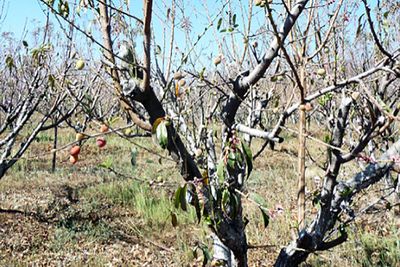Through evolution, plants have adapted to the drastic changes of their natural environment allowing them to thrive. Trees during the winter months live in a stage of suspended animation, a form of hibernation referred to as dormancy. Dormancy is their built-in defense mechanism against winter cold injury.
Dormancy
In the fall, plants start entering endodormancy. Endodormancy, or deep dormancy, is where the suspension is regulated by the inner metabolic processes within the meristem, as well as factors that suppress growth within the plant. To get out of endodormancy, plants must be exposed to cold temperatures, between 32° and 50° F, for a certain amount of time. Exposure to cold temperatures is referred to as chill hours.
Chill Hours
Temperatures below freezing increase the winter hardiness of the plants and make them less prone to winter cold injury. The number of required chill hours varies among different plants from about 100 hours in tropical and sub-tropical climates up to 1,500 hours in northern areas. The winters in the southern regions are brief, meaning plants have shorter chill requirements. Plants in the extreme north are low-chill because the winters are long with temperatures below zero and only a few short, spring warm-ups.
Once the chilling requirements are satisfied, the plants enter into endodormancy. After the outside conditions are favorable, the plants will start growing again.
Ecodormancy is imposed by environmental conditions, such as extreme temperatures, drought, etc. As temperatures start getting into the mid-40s, the buds will start to swell, pushing the bud scales to separate. The bud development becomes apparent once the buds become swollen and start to show green. Once budded, plants lose the ability to readjust to colder temperatures, and extreme cold temperatures will cause injury to the buds.
West Virginia Trees
In West Virginia, plants have chill requirements ranging from about 400 to 1,500 hours. Most of the fruit species are in the range of 700 to about 1,300 chill hours, though some apples, like Gala and Pink Lady, have a lower chill requirement of 400 hours. At higher elevations, plants have higher chilling requirements to keep them dormant and safe from sudden warm-ups and late frosts. If the plant does not have sufficient exposure to chilling, the buds don’t develop and grow. In West Virginia, we normally accumulate enough chill hours by late January to mid-February.
Author:
Mira Danilovich, WVU Extension Consumer Horticulture Specialist
Last Reviewed: April 2018